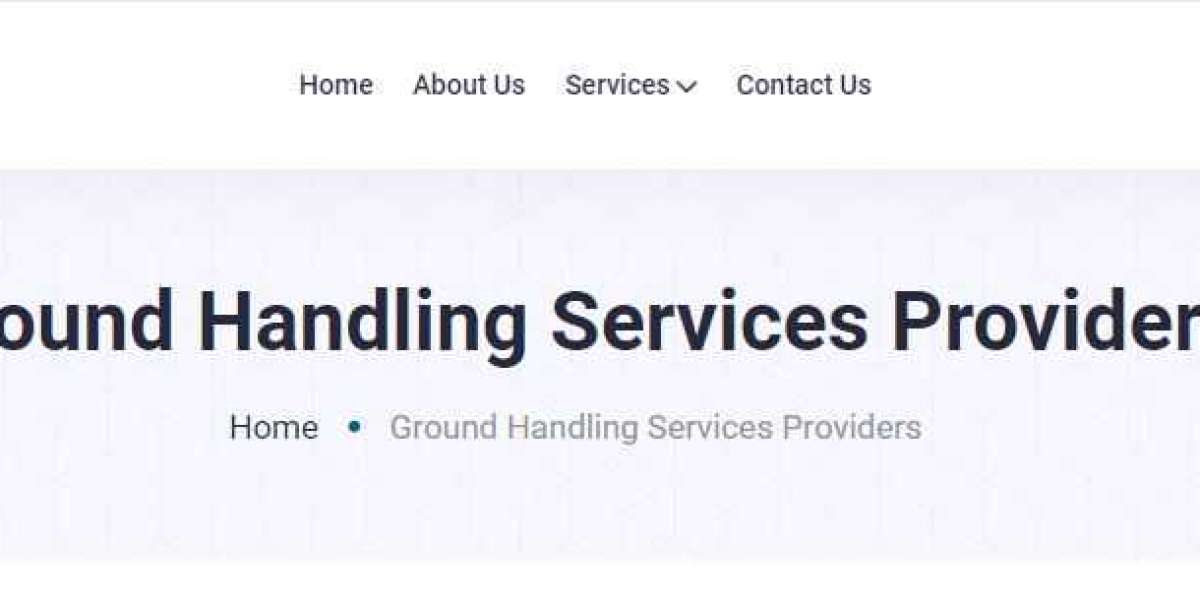Ground handling services are vital to the smooth operation of airport and airline functions. These services ensure that aircraft are ready for takeoff and landing, passengers are assisted, and baggage is handled efficiently. Given the complexity and high-stakes nature of these operations, effective training and development for ground handling service providers is critical. This article explores the importance of training in this sector, key components of training programs, challenges faced, and best practices for successful implementation.
The Importance of Training in Ground Handling
Safety and Compliance
One of the primary reasons for robust training programs is to ensure safety and compliance with regulatory standards. Ground handling involves various tasks, including baggage loading, aircraft servicing, and passenger assistance. Each of these activities carries inherent risks, and proper training is essential to minimize accidents and ensure compliance with local and international regulations. Failure to adhere to safety protocols can lead to severe consequences, including accidents, legal liabilities, and financial losses.
Enhanced Efficiency
Training not only emphasizes safety but also enhances operational efficiency. Well-trained personnel can perform their tasks more effectively, reducing turnaround times for aircraft and improving overall service quality. Efficient handling processes lead to faster boarding and deplaning of passengers, as well as expedited baggage processing, which collectively elevates the customer experience.
Quality Customer Service
In the service-oriented industry of ground handling, the quality of customer service is paramount. Training programs that encompass customer interaction strategies, conflict resolution, and communication skills enable ground handlers to provide exceptional service, leading to improved passenger satisfaction. This is particularly crucial in an era where customer experiences significantly influence airline reputation and business sustainability.
Adaptability to Technological Advancements
The aviation sector is continually evolving with technological advancements. Ground handling services are not exempt from this transition. Training programs must include instruction on the latest equipment and technologies, such as automated baggage systems, aircraft towing vehicles, and real-time tracking applications. By equipping employees with knowledge about new tools and systems, organizations can enhance their operational capabilities and remain competitive.
Key Components of Ground Handling Training Programs
Initial Training and Onboarding
The first step in the training process is often an initial training and onboarding program for new employees. This may cover basic ground handling operations, safety protocols, company policies, and customer service expectations. A well-structured onboarding program can help new hires acclimate quickly to their roles.
Ongoing Training and Skills Development
Given the dynamic nature of the industry, ongoing training is vital. This can take many forms, including workshops, simulation training, and refresher courses on safety regulations and operational procedures. Continuous professional development keeps employees informed about changes in the industry, enhancing their skills and ensuring they remain competent in their roles.
Safety Training
One of the most critical components of ground handling training is safety training. This training should cover the following areas:
- Hazard Identification: Employees should know how to identify potential hazards and risks in their work environment.
- Emergency Procedures: Training should include procedures for responding to emergencies such as fuel spills, medical emergencies, or aircraft incidents.
- Personal Protective Equipment (PPE): Training must emphasize the importance of PPE and proper usage to prevent injuries.
Customer Service Training
Ground handling staff often serve as the first point of contact for passengers. Therefore, training in customer service is essential. Components may include:
- Effective Communication: Training on how to communicate clearly and positively with passengers.
- Conflict Resolution: Providing staff with strategies to handle difficult situations and resolve conflicts effectively.
- Cultural Sensitivity: Teaching employees about cultural differences and how to provide respectful and relevant assistance to diverse passenger groups.
Equipment Operation Training
Employees should receive thorough training on the proper operation of ground support equipment, such as:
- Baggage Trolleys and Loaders: Training staff on how to safely operate these vehicles and equipment.
- Conveyor Systems: Familiarizing employees with the operation and troubleshooting of baggage conveyor systems.
Environmental Awareness Training
With increasing global concern about environmental sustainability, ground handling services need to train their employees on environmentally friendly practices. This includes:
- Waste Management: Training on proper disposal and recycling of waste generated during operations.
- Fuel Efficiency: Strategies to reduce fuel consumption and greenhouse gas emissions during ground operations.
Challenges in Training and Development
Resource Constraints
One significant challenge in training ground handling staff can be the resource constraints of the organization. Offering comprehensive training programs often requires significant investment in terms of time, money, and human resources. Small ground handling providers may struggle to provide extensive training due to limited budgets.
High Turnover Rates
The ground handling industry is notorious for high employee turnover. Frequent turnover creates ongoing training challenges, as organizations must continuously bring new employees up to speed, often diverting resources from enhancing existing programs.
Rapidly Changing Regulations and Technology
The aviation industry is heavily regulated, and compliance requirements can change frequently. Ground handling providers must keep their training programs updated to comply with new laws and adapt to technological advancements. Failing to do so can result in operational inefficiencies and safety risks.
Resistance to Training
Some employees may be resistant to training, viewing it as an unnecessary burden. In some cases, they might feel overwhelmed by new information or fear changes to their established work routines. Overcoming this resistance requires strong communication strategies and showcasing the benefits of training.
Best Practices for Successful Training Implementation
Establish Clear Objectives
Before implementing a training program, ground handling providers should define clear objectives. Identifying what the training seeks to achieve, whether it's improved safety, enhanced customer service skills, or technology proficiency, helps tailor the training to meet specific needs.
Leverage Technology
Modern training techniques utilize technology to enhance learning experiences. Utilizing online training platforms, virtual simulations, and interactive modules can make training more engaging and accessible for employees. Such technology can also facilitate ongoing training, allowing employees to refresh their knowledge at their convenience.
Promote a Culture of Continuous Learning
Ground handling service providers should foster an organizational culture that values continuous learning. Encouraging employees to seek professional development opportunities and recognizing their initiatives increases engagement and loyalty.
Involve Employees in the Training Process
Engaging employees in the training process leads to a more inclusive and effective program. Ground handling providers can gather feedback from staff about training needs and preferred learning methods. Establishing workshops where employees share their experiences and learn from one another can also create a stronger team dynamic.
Measure Training Effectiveness
Finally, assessing training effectiveness is crucial. Ground handling providers should establish metrics to evaluate the results of their training programs. These may include measuring improvement in operational efficiency, adherence to safety protocols, and overall employee performance. Regular evaluation helps organizations refine and enhance their training strategies over time.
Conclusion
Training and development are essential components of successful Ground Handling Services Providers. Organizations that prioritize comprehensive training programs enhance safety, operational efficiency, and customer satisfaction. By fostering a culture of continuous learning and leveraging modern training techniques, ground handling service providers can meet the evolving demands of the aviation industry. Addressing challenges proactively and implementing best practices will ensure that ground handling providers not only comply with regulations but also excel in delivering quality service to airlines and passengers alike.
Location : United Kingdom
FAQ's
What is ground handling?
Ground handling refers to the services performed on the ramp and at the airport for aircraft, luggage, and passengers between the arrival and departure processes. This includes baggage loading and unloading, aircraft refueling, passenger boarding, and much more.
Why is training important in ground handling?
Training in ground handling is critical for ensuring safety, compliance with regulations, operational efficiency, and high-quality customer service. It helps prepare employees to effectively handle emergencies, adapt to new technologies, and provide exceptional service to passengers.
How often should ground handling staff be trained?
Ground handling staff should undergo initial training upon hiring, followed by ongoing training regularly. Refresher courses and skill development programs should occur at least annually or whenever there are significant changes in procedures, technology, or regulations.
What types of training are required for ground handling employees?
Training for ground handling employees typically includes initial onboarding, safety training, customer service training, equipment operation instruction, and environmental awareness training, among others.
What challenges do ground handling providers face in training?
Challenges include resource constraints, high employee turnover, rapidly changing regulations and technologies, and resistance to training among staff. Addressing these challenges requires strategic planning and effective communication.
How can technology enhance training programs in ground handling?
Technology can enhance training programs through online learning platforms, virtual simulations, and interactive modules that provide engaging and accessible learning experiences for employees. These tools facilitate ongoing education and skill development.







